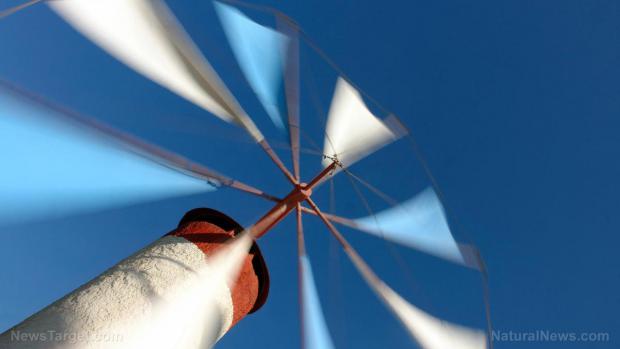
Breaking News
 Interview 1996 - The Fraud 1000x BIGGER Than Somali Day Care (NWNW #614)
Interview 1996 - The Fraud 1000x BIGGER Than Somali Day Care (NWNW #614)
 1 Min Ago: MORGAN STANLEY MEMO LEAKED Exit All Silver Positions Before Month End
1 Min Ago: MORGAN STANLEY MEMO LEAKED Exit All Silver Positions Before Month End
 Silver Price Collapse Begins Friday? - $14 Billion In Gold & Silver Sales Incoming
Silver Price Collapse Begins Friday? - $14 Billion In Gold & Silver Sales Incoming
 Freshman Rep goes full BEAST MODE during questioning over Somali scam…
Freshman Rep goes full BEAST MODE during questioning over Somali scam…
Top Tech News
 Kawasaki's four-legged robot-horse vehicle is going into production
Kawasaki's four-legged robot-horse vehicle is going into production
 The First Production All-Solid-State Battery Is Here, And It Promises 5-Minute Charging
The First Production All-Solid-State Battery Is Here, And It Promises 5-Minute Charging
 See inside the tech-topia cities billionaires are betting big on developing...
See inside the tech-topia cities billionaires are betting big on developing...
 Storage doesn't get much cheaper than this
Storage doesn't get much cheaper than this
 Laser weapons go mobile on US Army small vehicles
Laser weapons go mobile on US Army small vehicles
 EngineAI T800: Born to Disrupt! #EngineAI #robotics #newtechnology #newproduct
EngineAI T800: Born to Disrupt! #EngineAI #robotics #newtechnology #newproduct
 This Silicon Anode Breakthrough Could Mark A Turning Point For EV Batteries [Update]
This Silicon Anode Breakthrough Could Mark A Turning Point For EV Batteries [Update]
 Travel gadget promises to dry and iron your clothes – totally hands-free
Travel gadget promises to dry and iron your clothes – totally hands-free
 Perfect Aircrete, Kitchen Ingredients.
Perfect Aircrete, Kitchen Ingredients.
 Futuristic pixel-raising display lets you feel what's onscreen
Futuristic pixel-raising display lets you feel what's onscreen
Some uncommon ways to generate electricity for your homestead

(Natural News) If you're staying at a homestead or otherwise living off the grid, you probably already rely on solar power as your primary source of electricity. However, you might want to consider supplementing your supply with other alternative sources of energy. If you have some spare equipment lying around, you can repurpose these items into unconventional methods of generating electricity for your homestead. The two main things you will need are a coil of wire and magnets. As long as you can mount the magnets on something that can spin around your coil, you can induce electrons to flow through your coil and produce electricity. (h/t to BioPrepper.com)
Windmills and wind turbine generators
If you happen to live in a windy area, then you might be able to harness this wind as a feasible source of energy. You can create your own DIY Tesla turbines using old CDs and magnets. These turbines don't only work using wind, but water as well. This can come in handy if you also happen to be somewhere near a source of running water. If you have access to old computer hard drives, you can even repurpose their heavy metal plates into more durable turbines that can spin at higher speeds. (Related: New "smart blade" technology will make wind turbines even more efficient.)
Bicycles and other pedal devices
With a bicycle generator, you can shoot two birds with one stone by getting some exercise, while also charging your batteries. As long as you can secure your bike in a stationary position, you should have no problem attaching it to a motor that is capable of generating electricity. All you have to do is to rig up the moving wheel of your bicycle to a voltage regulator and a battery using a fan belt. The only drawback to this energy source is that you will only be able to produce electricity for as long as you can keep pedaling. This means that you will likely only get enough power to charge small devices and appliances.
Appliance motors
Basically, anything that can spin can be used to generate electricity. This includes the motors of various household appliances, such as blenders, food processors, can openers, and computer hard drives. For these motors, you will need to build rectifiers to take the energy output and convert it from an alternating current (AC) into a direct current (DC). If you plan to use appliance motors to produce electricity, be sure to take into consideration how fast they spin and how much load they can handle. If you push the speed beyond its ideal limit, you may risk burning out your motors.
Fans
If you take apart an old battery-powered fan, you can scavenge the motors to produce electricity or repurpose the blades to create more makeshift turbines. The motors of box fans are designed to operate for hours on end without the need for maintenance or risk of overheating. As for the fan blades, you can simply attach some magnets to them and let them spin around your coils.
Household trash
Your garbage will not be able to generate electricity on its own. Unlike the previous methods, this method requires you to convert the trash into something else, such as heat, before it can be used to produce energy. The simplest method is to burn your trash to produce heat. The heat can then produce steam, which can then be used to spin a conventional turbine. Alternatively, you can utilize the heat to spin a rubber band engine that can, in turn, be used to spin magnets.



